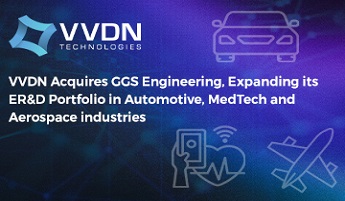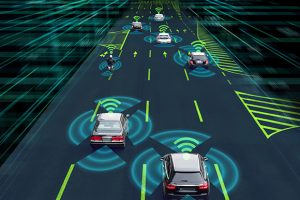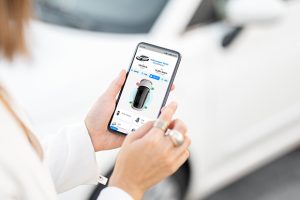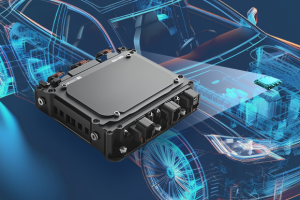As the automotive industry accelerates its digital transformation, the vehicle cockpit has emerged as one of the most dynamic areas of innovation. No longer just a control space, the modern cabin is evolving into an intelligent, immersive and secure digital environment. At the center of this evolution is the Cockpit Domain Controller (CDC), a high-performance compute unit that centralizes control and data management across multiple in-cabin subsystems.
Unlike traditional distributed Electronic Control Units (ECUs), the CDC consolidates multiple subsystems such as the digital instrument cluster, infotainment, HVAC, telematics and even ADAS-related displays into a unified platform. This integration enhances user experience, optimizes hardware utilization, reduces cost and enables easier software upgrades across the vehicle’s lifecycle.
Table of Contents
Transforming the In-Cabin User Experience
OEMs worldwide are redefining vehicle interiors to align with growing consumer expectations for a connected, digital experience. Traditional head units are being replaced by intuitive, immersive platforms that support seamless integration with mobile devices, intelligent voice assistants and smart navigation features. Today in-cabin experience is characterized by advanced audio, real-time connectivity and personalized user experience.
Modern consumers expect infotainment systems to reflect their digital lifestyles, supporting Bluetooth, Apple CarPlay, Android Auto and cloud-based services. Simultaneously, emerging safety regulations such as Euro NCAP, BHARAT NCAP and GSR2 (General Safety Regulation 2) in Europe are accelerating the need for in-cabin safety systems, including driver and occupant monitoring using interior cameras.
Historically, delivering these advanced features required multiple ECUs, each with its own hardware and software stack. This approach often increased design complexity, higher costs and maintenance challenges. However, today’s Cockpit Domain Controllers, overcome these challenges by offering a single, scalable compute platform that supports both critical and non-critical applications.
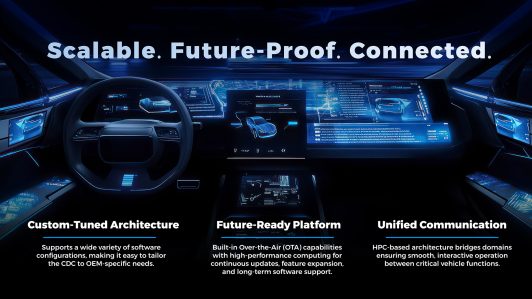
What is a Cockpit Domain Controller (CDC)?
A CDC is a consolidated computing platform that centralizes control across several key cockpit domains, including:
- Digital Instrument Cluster
- Infotainment System (IVI)
- Head-Up Display (HUD)
- Rear Seat Entertainment
- eMirror System
- Driver and Occupant Monitoring System
- Voice Assistants
- Climate and Seat Controls
- AI-Based Personalization
These platforms are powered by advanced SoCs, support hypervisors for mixed-criticality applications and run multiple operating systems such as Linux, Android and QNX, delivering real-time capabilities and ensuring ASIL compliance.
By consolidating multiple ECUs into a unified, upgradable architecture, CDCs enable faster deployment of new features via over-the-air (OTA) updates, while simplifying design and enhancing software scalability across various vehicle models and regions.
In-Cabin Intelligence: Evolving Beyond Displays
The modern automotive cockpit is rapidly transforming into an intelligent, responsive environment—far surpassing traditional display-based systems. Vehicles now perceive, learn, and respond to the needs of both driver and passengers in real-time. Key innovations include:
1. Intelligent Cockpit Ecosystem
- Pillar-to-Pillar Displays: Deliver a seamless visual experience for both driver and front passenger.
- Rear Passenger Displays: Provide extended infotainment to all occupants.
- Advanced Audio Personalization: Immersive sound systems (e.g., Dolby Atmos/Surround Sound), customized per user profile.
- Context-Aware Personalization:
- Driver recognition via interior camera or smart key fobs
- AI-driven customization of infotainment, climate, and ambient lighting
- Automatic adjustment of seating positions and UI profiles
- Dynamic Persona Transition
- Effortless switch between user profiles (e.g., driver, family member, valet)
- Context-based adaptation based on time, user behavior and journey type
2. Voice and Gesture Interfaces
- Multilingual Voice Assistants: Powered by advanced Natural Language Processing (NLP)
- Touchless Gesture Controls: Intuitive command over media, navigation, calls and more
3. Cloud Connectivity & OTA Upgrades
- Cross-Device Sync: Preferences and settings follow users across different vehicles and smart ecosystems
- Real-Time Telemetry & Diagnostics: Live updates on vehicle health and usage
- Seamless OTA Updates: Continuous delivery of new features, performance enhancements and security patches
Mixed-Criticality and Scalable Architecture
CDC platforms support mixed-criticality processing, allowing safety-critical functions (like the instrument cluster) to securely coexist with non-critical applications (like Android infotainment) on the same hardware. This is achieved through virtualization, containerization and real-time OS environments, making the platform robust, secure and future proof.
OEMs benefit from scalable and flexible architectures that allow CDC deployment across vehicle segments by adjusting performance configurations. Regional requirements (like specific tuner modules or compliance features) can be managed via modular software stacks, eliminating the need for complete system redesigns.
Cybersecurity in the Cockpit
With software and connectivity taking center stage, cybersecurity is now fundamental. CDCs manage sensitive personal, navigation and operational data, making them potential targets for cyber threats.
Key security implementations include:
- Secure Boot and Trusted Execution Environments (TEE)
- End-to-End Encryption for In-Cabin and OTA Communications
- Intrusion Detection and Prevention Systems (IDS/IPS)
- Firewall Protections at Gateway and ECU Levels
- Compliance with ISO/SAE 21434 and UNECE WP.29 (R155/R156)
- Real-Time Threat Analytics and Anomaly Detection
Empowering the Future of In-Cabin Computing
The Cockpit Domain Controller has evolved from a technical enabler to the digital brain of the vehicle interior. CDCs empower OEMs to deliver personalized, immersive in-cabin experiences, streamline product development, enhance modularity, and reduce total cost of ownership.
At VVDN Technologies, we are at the forefront of this transformation offering comprehensive CDC solutions that cover the entire lifecycle from high-performance hardware design, embedded software, middleware integration, to validation and scalable manufacturing. Our platforms are engineered to meet global standards in safety, quality and cybersecurity, enabling next-gen cockpits that are intelligent, immersive and future-ready.
To learn more about our CDC capabilities or explore collaboration opportunities, contact us at info@vvdntech.com.

